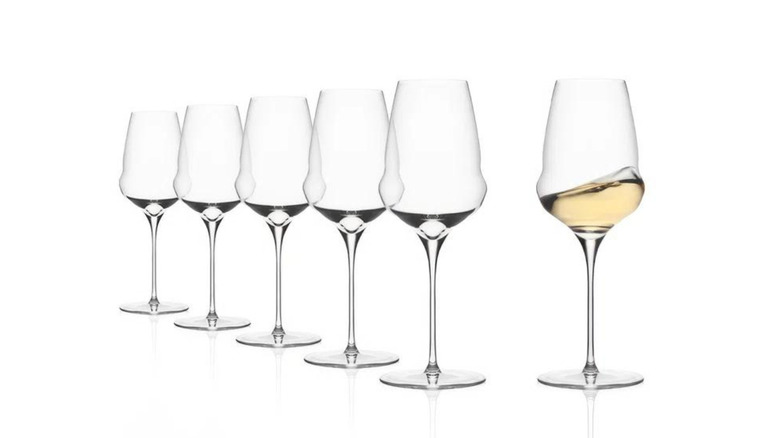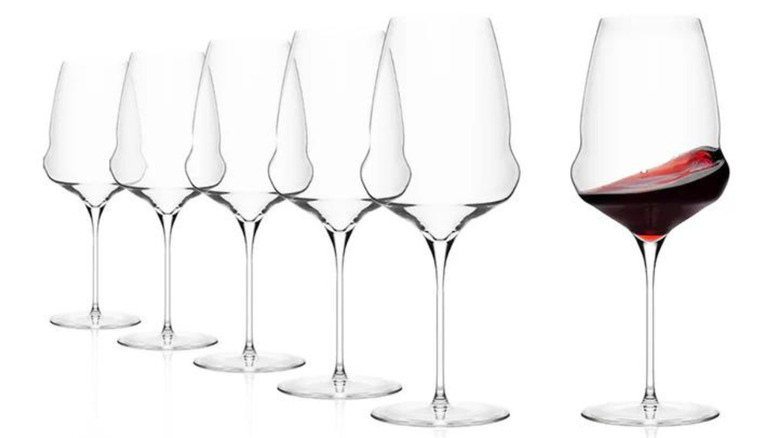The Cocoon Wine Glass Is The New Shape You Should Know About
Sommeliers and amateurs alike love to sip their favorite vintage from specially designed glassware. The many varieties of wine glasses are artfully crafted to showcase the best features of the wines they contain. But while many wine glass designs used today have rich histories and long standing, there's something new and exciting happening on the scene.
The latest iteration comes in the form of cocoon wine glasses, created by the German glassware brand Stölzle Lausitz. This fascinating design trades in the traditional, bulbous base for a ridged bulge that gives the glassware its titular cocoon aesthetic. But while the unusual design of the glass certainly makes it stand out from the crowd, the ridged surface also serves a function: aeration.
A common practice of all wine drinkers is to aerate their wine; aeration is colloquially referred to as letting a wine breathe. In other words, aeration occurs when you introduce oxygen from the air into the wine. Aeration isn't always necessary but it can be particularly helpful for softening up wines with big character. The functional design of the cocoon glass aims to increase the amount of aeration that occurs in your wine while simultaneously trapping the pleasant aromas inside the glass. This becomes most apparent when you swirl the wine as, instead of dancing across the conventionally bulbous body, the wine reaches up to the lip and cascades back down into itself. While swirling is already an effective way to aerate wine, the cocoon amplifies the effect considerably.
A new type of wine glass design is beginning to emerge
While the cocoon glass is certainly innovative, it's only the latest in a series of wine glasses that utilize this unique design. The cocoon was debuted in 2023, but in 2019, the legendary glassmaker Kurt Josef Zalto's brand Josephinenhütte released the Josephine glassware set, which is widely considered the glass artisan's masterpiece. If there is an origin of the ridged body design, the Josephine glassware set can likely claim the title.
Cocoon glassware may share the Josephine glass's new design features but it isn't a mindless copy. While there are several things it does differently, the biggest innovation is on the production side. Josephine glasses are all handmade and take two full days to produce. That's certainly a selling point, but it also increases the price of a set substantially. Cocoon glassware is made with modern machinery, significantly reducing the price without compromising the quality of the materials.
This is all well and good, but do cocoon wine glasses and its kind have any staying power? Only time can answer that question, but reception has been mixed. While some appreciate the innovative spirit that pushes the industry forward, others see the design choice as more of a marketing tactic than a breakthrough in functional design. If glassmakers are hoping to cash in on the next evolution in wine glassware, perhaps the reference to a butterfly's metamorphosis is more on the nose than it initially appears.

